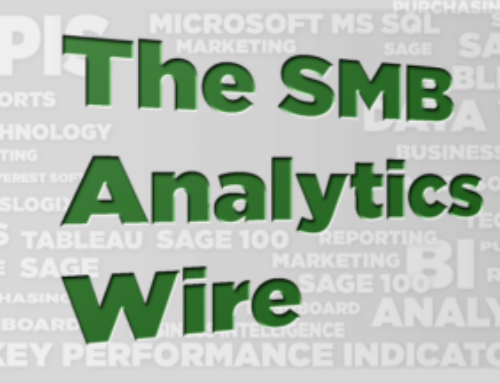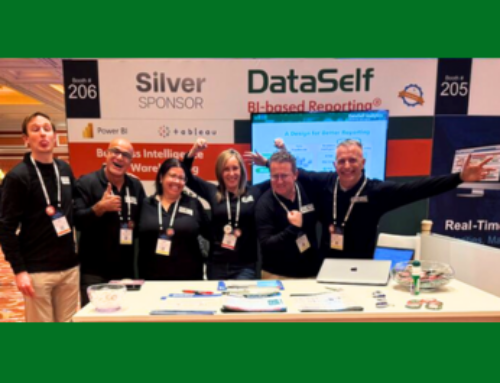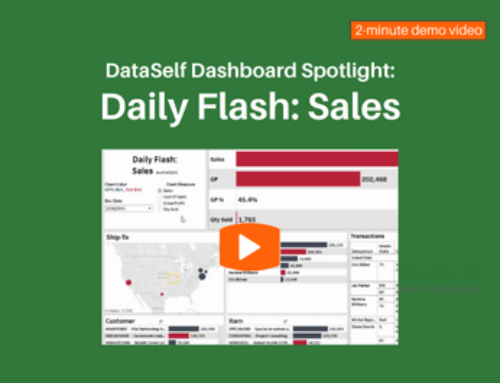 Seeing BI Through New (Microsoft Dynamics NAV) Eyes
Seeing BI Through New (Microsoft Dynamics NAV) Eyes
By Joni Girardi, DataSelf Corp., NAVUG™ Partner Member
Source: NAVUG Magazine, Q1 2016
Just about every business intelligence solution claims “ease of use.” Every vendor says it. The trouble is the inevitable gotcha. There’s always a catch, a little detail they don’t mention — and it’s almost always that the business user needs IT’s help to create or modify reports. That’s the old way of BI.
Fortunately, there’s a new way to do BI. At DataSelf, we’ve been listening to business intelligence clients for more than 15 years about reporting and how they squeeze value from data. The several dozen people we talked to at NAVUG Summit 2015 just confirmed what we’ve heard from business users over the years: They want to be empowered, they want to slice and dice and drill down into their data, and they want to do that anytime and anywhere.
Microsoft Excel and Reporting Services are no-brainer tools, but almost all business users want something simpler yet more capable, too. Whether they work in upper management, IT, finance, HR, accounting, or shipping, they’re responsible for delivering reports to decision makers — and they want to solve their own problems and do their jobs more efficiently. They have no time to fumble with Excel or, on a more powerful system, to wait for IT experts.
Business Intelligence is about Business
You can hardly blame BI vendors for playing to IT. At first, we at DataSelf were no different. After all, IT managed the organization’s data, so why wouldn’t the reports flow through them?
But most IT groups lack the intimate knowledge it takes to grasp business needs, so business users have to explain and explain again. Delays and do-overs follow even as new questions keep popping up.
No one can wait for help for every new opportunity, problem, or prediction. There’s just no time to lose. So decision makers often just wing it, and that’s just not good enough. Productivity occurs when decision makers have a tool they can use the tool wherever they are, whether at the office, in a conference room, or on the road. The more they know when they need to know it, the more value they create.
What’s more, the more people you have who can create value with data, the higher your organization’s collective intelligence can go.
Knowledgeable NAVUG users
People in the NAVUG community are knowledgeable about BI. They just have to be. Reporting is a constant challenge, and many already see a solution: a data warehouse. Some have tried to build one from scratch, then creating their own reports and analytics on top of it. Trouble arises when they come up short on skills, budget, and time.
The good news is that there are providers that offer a data warehouse and tons of reports and analytics out of the box. That makes life easier!
Microsoft Charging with PowerBI
The new PowerBI version is promising. Microsoft has taken the good parts of Excel reporting and created an independent product, and that package looks awesome. Anything new has bugs at first. But even so, people should try it.
My Advice to You
My first advice is about empowering business users, which can be tricky. All BI tools look easy in demos. But many of these tools won’t cut it in business users’ hands. Remember, the tool should help IT’s job, but ultimately, it must be intuitive to the business minds.
Second, there are many options for on-premises deployment or cloud deployment or both. Before you decide, be sure you understand the implications for your specific business.
Third, educate yourself and then find a good partner. Ask questions and gain a clear understanding of what you’re trying to achieve with BI. Look for reputable comparisons such as Gartner BI Magic Quadrant reports. Then find a good partner who will help you deliver on those objectives. Perhaps start with a small project. Partners don’t want to implement something that is destined to fail. They all want to see you and your organization succeed.
As a partner, I’m here to help you decide what will work best for your organization. If it’s a competitor’s product, I’m going to tell you that. I don’t want your money if I’m not going to add significant value. Oftentimes our solutions complement a competitor’s solution, and many players in the BI market are good at working with another to figure out the best fit for a user.
Remember, everyone’s learning and technology changes fast. With 15 years behind us, we continue to have “aha” moments. One by one, though, we take each revelation and use it to build our arsenal.
You also learn by crowdsourcing. We’ve done that by listening to users, which is how that’s how we built our 5,000-plus reports, dashboards, and KPIs. Likewise, you should have a BI system that empowers a broad range of business users to reap your organization’s collective intelligence. That’s the new way of BI.




